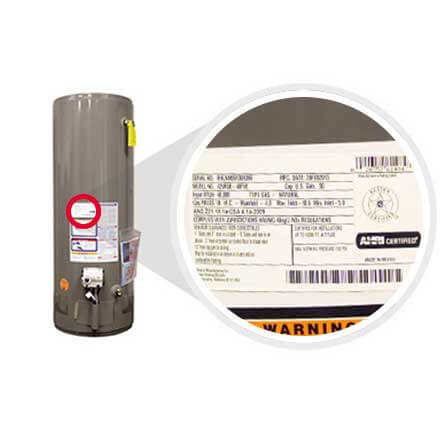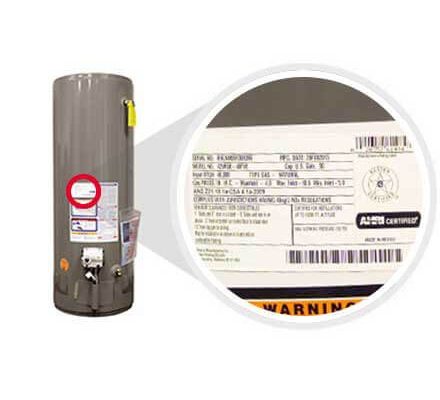
Here’s the thing: understanding what actually voids a Rheem water heater warranty feels a bit like reading “rules for wishes” from a genie. There are details that, if missed, could come back to bite you later. So, whether you’re new to home maintenance or just want to keep your investment safe, knowing how to *avoid* these mistakes is key. Let’s break it down together—no jargon, no scare tactics, just straightforward advice you can actually use.
Why Warranties Matter With Rheem Water Heaters
A warranty isn’t just a slip of paper tucked in your user manual or a promise to ignore until something breaks. For your Rheem water heater, the warranty is more like an invisible shield—it protects your wallet and your peace of mind if anything goes wrong. But that shield only works if you play by the rules.
Let me explain. Rheem offers different warranty periods and coverage depending on your model, whether it’s tank or tankless, electric or gas. But in every case, the warranty covers defects in materials and workmanship, not wear-and-tear or accidental damage. It’s like a safety net, but with some very specific holes. If you accidentally do something outside their guidelines—even by mistake—you risk dropping right through.
Honestly, a lot of homeowners think, “If it breaks, Rheem will just fix it.” Not always true! Knowing what your warranty covers (and what it doesn’t) is the first—and maybe most important—step in avoiding a voided warranty. The details can look boring until you need them, but trust me, future-you will thank you for paying attention now.
The Most Common Ways People Void Their Rheem Warranty
You might be wondering: what actually gets people into trouble with their Rheem water heater warranty? The answer isn’t always obvious, and that’s where folks trip up.
- Improper installation by an unlicensed person
- Using non-approved parts or accessories
- DIY repairs that skip authorized service
- Failure to perform regular maintenance
- Ignoring water quality or electrical requirements
Let’s talk through an example. Imagine you’ve just replaced your old water heater yourself to save a few bucks. You skip the permit, don’t check the local code, and figure, “How hard can this be?” Fast forward a year. The unit stops working, you call Rheem for help, but as soon as they see your installation wasn’t done by a licensed pro, your warranty is toast.
It’s like baking a cake and swapping in salt for sugar—sure, it looks the same, but the results can be a disaster. Little details in the installation or upkeep process are actually huge when it comes to keeping your warranty safe.
The Dos and Don’ts of Installation
Here’s where most people make or break their Rheem water heater warranty: the installation process. Rheem is pretty clear—installations must be done by a licensed, authorized professional. Trying to “code your way” through a DIY job or skipping the right permits might feel clever, but it’s a one-way ticket to warranty trouble.
- Do hire a certified plumber or installer who knows Rheem products and local building codes.
- Don’t let your handy neighbor or favorite uncle take a crack at it—even if they’re pretty good with tools.
- Do double-check that your installer registers the warranty online for you right after installation. This sometimes gets overlooked, but it’s essential for activating your protection.
- Don’t modify, move, or “reset” components on your own without professional help. Even innocent changes, like swapping out a pressure relief valve for a universal one, can break your coverage.
Honestly, it might feel like overkill, but the professional touch here isn’t just about following rules—it also ensures the water heater works correctly and safely. Think of it this way: if you were setting up a complicated code for a remote or syncing a new device, you’d want a pro, right? Same logic applies.
The Importance of Using Only Approved Parts
Let’s say your remote control battery dies, or a heating element goes bad. You might be tempted to grab any old part from the hardware store or order a “universal” replacement online. Here’s the catch: Rheem’s warranty requires you to use authorized, approved parts and accessories.
If you use a generic part—or even try to pair a non-compatible accessory—you risk voiding your coverage. Why’s this such a big deal? Well, not all parts are created equal. Non-Rheem components can cause damage, improper syncing with safety features, or even dangerous malfunctions. It’s sort of like putting diesel in a gasoline car: the risk just isn’t worth it.
Whenever you need a repair or replacement, ask your installer or call Rheem support to confirm the code and compatibility first. Saving a few bucks now could cost you a lot more later if the warranty is denied. When in doubt, always go with Rheem-approved parts for your water heater.
Regular Maintenance: The Silent Warranty Saver
Here’s something people often ignore: regular maintenance is just as important as a professional installation. Rheem actually spells out certain tasks you need to perform to keep your warranty valid. These usually include annual inspections, flushing the tank to remove sediment, checking for leaks, and monitoring water quality.
Think of your water heater like a car. If you never change the oil, you can’t expect the manufacturer to cover engine repairs, right? It’s the same idea here. Skipping yearly flushes or ignoring hard water buildup can lead to trouble down the line—and Rheem has the paperwork to prove if maintenance was skipped.
A smart move? Keep a tiny logbook. Write down the dates of flushes, any service calls, or battery changes for controls. If a problem crops up, you’ll have proof you did your part. If you’re not handy, no worries—most plumbers offer a maintenance plan. Just make sure you’re documenting everything, because if Rheem asks, you need the receipts.
Pay Attention to Water and Power Requirements
Here’s a detail that sneaks up on people: water quality and electrical supply really matter. Rheem lists specific limits for water hardness, pressure, and even the electrical code needed for your water heater. If your water is too hard or your wiring isn’t up to code, you could run into trouble—and not just with the heater, but with your warranty too.
For example, using well water with lots of minerals can lead to limescale buildup and element failure. If Rheem finds out (and they can, if a tech examines your heater), your warranty claim might be denied. The same goes for using generators or improper voltage supplies—if the power source damages the water heater’s electronics, you’re on the hook for repairs.
If you’re not sure about your water or home’s power setup, ask your installer or a licensed electrician for a quick check. A water softener or surge protector can go a long way in extending your heater’s life and keeping your warranty intact.
DIY Repairs: Why They’re Risky for Your Rheem Warranty
Honestly, we all love a good DIY project—who doesn’t like feeling handy? But when it comes to troubleshooting or repairing a Rheem water heater, it’s a risky move for your warranty. Opening the unit, attempting to reset digital controls, or replacing internal parts without authorization will almost always void your coverage.
Here’s why: Rheem needs to trust that repairs are done correctly, using the right codes and parts, to guarantee safety and performance. If you tinker inside, even with the best of intentions, you’re taking a gamble—if something goes wrong, there’s no backup. If you run into trouble (like trouble with the remote, syncing an accessory, or a mystery error code), call a pro or Rheem support first.
And hey, it’s totally normal to want to fix things yourself. Just remember, this isn’t the time—at least not if you care about your warranty sticking around to help you later.
What To Do If Something Goes Wrong
So, let’s say your Rheem water heater stops working, throws up an error code, or just won’t heat water. What now? Here’s how you can stay within warranty guidelines and avoid problems:
- Don’t panic—take a breath and check the user manual for initial troubleshooting steps. Sometimes, the fix really is simple (like replacing a battery in the remote control).
- Call Rheem support or a licensed service provider before you do anything major. Tell them exactly what’s happening and follow their instructions to the letter.
- Document everything: who you spoke with, when you called, and what steps you took. This creates a useful paper trail in case you need to prove you did everything right.
- Never open up the water heater or attempt a reset/repair unless explicitly told by an authorized tech. Even small mistakes can risk your warranty.
If the problem’s bigger (like recurring codes, power issues, or water leaks), getting things fixed quickly—and by the book—is your best bet. That way, you’ll have your warranty standing by, ready to help.
Closing Thoughts: Protecting Your Investment
Owning a Rheem water heater is a bit like owning a reliable car—it’ll serve you well, as long as you take care of the basics and stick to the rules. Honestly, avoiding a voided warranty isn’t about memorizing fine print or living in fear; it’s about a few simple habits: trust the pros for installation and repairs, use only approved parts, keep up with maintenance, and never be afraid to call for help if you’re stuck.
At the end of the day, a little attention now saves a lot of headaches (and bills) later. Treat your Rheem warranty like a friendly safety net: don’t poke holes in it, and it’ll always be ready to catch you if things go wrong.
